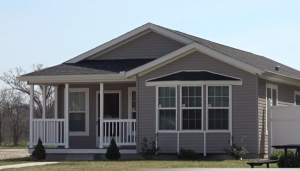Mobile, Manufactured, Modular: What’s the Difference?
Although many people use these terms interchangeably, the only thing they really have in common is beginning life in a factory.
Mobile homes — the sometimes flimsy trailers of bygone years, before construction and safety standards took root — are an artifact of the past and have not been produced since June 15, 1976, when federal standards governed by the U.S. Department of Housing and Urban Development ushered in the era of HUD Code manufactured homes.
Today’s manufactured homes, with performance-based standards that can meet or exceed those of traditional site-built housing, are constructed at the factory and trucked in one or more completed sections to the site where they are to be installed.
Modulars, on the other hand, are shipped in sections known as modules and assembled on site, subject to international residential or building codes that are tweaked to conform to the local codes of their final destination.
“The real key in factory-built housing is it’s built in a controlled environment,” says Mike Wnek, vice president of New Business Development for Jacobsen Homes.
There are no delays for inclement weather and no waiting for an inspector to show up so construction can move on to the next phase; inspectors are routinely on hand on the factory floor.
Cost, Financing and Other Considerations
Manufactured homes can cost half as much as a comparable site-built home, while modulars offer about 25 percent savings over site-built.
The bigger price tag on modulars is largely due to the greater cost of on-site assembly, which also tends to take a bit longer than the rapid installation time for a manufactured home.
Nonetheless, both types of factory homes are move-in ready in a fraction of the time required for a site-built home; and both can be financed with a traditional mortgage, although modulars may sometimes qualify for better terms.


